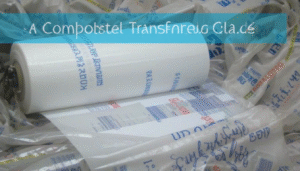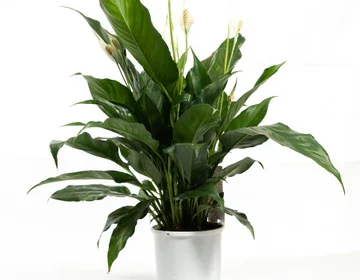
Thermal transfer ribbons play an essential role in modern printing applications across various industries in the UAE. From logistics and retail to manufacturing and healthcare, these ribbons ensure durable, high-quality, and smudge-resistant printing. In a country known for its fast-paced logistics and expanding industrial sectors, understanding the function and types of thermal transfer ribbons can help businesses choose the right solution for their labeling needs.
What Are Thermal Transfer Ribbons?
Thermal transfer ribbons in dubai are special films coated with ink that transfer onto labels through heat from a thermal printhead. The process creates clear, long-lasting images, barcodes, and text used on product labels and packaging. This technology ensures that printed information remains readable even under challenging environmental conditions, such as heat, humidity, or friction—common in the UAE’s climate.
How Thermal Transfer Printing Works
The thermal transfer process involves three main components: the printer, ribbon, and label material. When the printhead heats specific areas of the ribbon, the ink melts and transfers onto the label surface. The result is a durable and sharp print suitable for long-term use.
Types of Thermal Transfer Ribbons
Different applications require specific ribbon formulations. Understanding each type helps businesses choose the right one based on their printing needs and environmental exposure.
1. Wax Ribbons
Wax ribbons are ideal for printing on paper labels used in retail, logistics, and warehouse applications. They provide good print quality for barcodes and text but are less resistant to smudging or scratching. These ribbons are commonly used for short-term labeling where high durability is not required.
2. Wax-Resin Ribbons
Wax-resin ribbons offer a balance between durability and print quality. They can be used on both coated paper and synthetic materials. These ribbons are suitable for applications that involve moderate exposure to moisture, chemicals, or handling—conditions often found in UAE’s logistics and distribution environments.
3. Resin Ribbons
Resin ribbons are the most durable option, designed for printing on synthetic materials like polyester, polypropylene, and vinyl. They resist heat, chemicals, and abrasion, making them suitable for industrial and outdoor labeling. In UAE’s hot and often humid weather, resin ribbons are widely used for asset labeling, electrical components, and medical equipment.
Applications of Thermal Transfer Ribbons in UAE
Thermal transfer ribbons serve a wide range of industries across the UAE, ensuring that printed information remains clear and durable throughout the product’s lifecycle.
1. Logistics and Warehousing
In the UAE’s logistics hubs such as Dubai and Abu Dhabi, barcodes and shipping labels must remain readable from origin to destination. Thermal transfer ribbons ensure smudge-proof and long-lasting printing for inventory management and tracking systems.
2. Retail and Product Labeling
Retailers in the UAE use thermal transfer printing for price tags, shelf labels, and product packaging. These ribbons help maintain sharp and clear prints that enhance presentation and traceability.
3. Manufacturing and Industrial Use
Industries such as automotive, electronics, and construction require labels that can endure harsh conditions. Resin ribbons, in particular, provide high durability for labeling components and tools exposed to high temperatures or chemicals.
4. Healthcare and Pharmaceuticals
Hospitals and laboratories across the UAE use thermal transfer ribbons to print patient records, specimen labels, and medication barcodes. The ability to withstand sterilization and chemical exposure ensures accuracy and safety in sensitive environments.
5. Food and Beverage Industry
Labels in the food industry must stay readable despite exposure to moisture, refrigeration, or oils. Wax-resin and resin ribbons are commonly used in this sector to ensure compliance with safety and traceability regulations.
Key Advantages of Thermal Transfer Ribbons
Thermal transfer technology offers several benefits that make it a reliable choice for UAE’s diverse industries.
Durable and Long-Lasting Prints
Unlike direct thermal printing, which fades over time, thermal transfer prints can last for years without losing legibility. This feature is crucial for long-term storage and outdoor labeling applications.
Versatility Across Materials
Thermal transfer ribbons work with various substrates, including paper, polyester, polypropylene, and vinyl. This flexibility allows businesses to adapt labeling solutions to their specific environments.
High Print Quality
These ribbons produce crisp text, fine barcodes, and detailed graphics. The precision ensures accurate scanning and professional presentation in industrial and retail settings.
Resistance to Harsh Conditions
Thermal transfer ribbons can withstand exposure to heat, chemicals, UV light, and abrasion. This durability makes them ideal for UAE’s climate and industries that operate under extreme conditions. To get more information click here…
Factors to Consider When Choosing Thermal Transfer Ribbons
Selecting the right ribbon depends on several factors related to application and material.
1. Label Surface
Determine whether the label material is paper or synthetic. Paper labels pair best with wax or wax-resin ribbons, while synthetic materials require resin ribbons for lasting results.
2. Environmental Conditions
Consider exposure to sunlight, moisture, or chemicals. UAE’s high temperatures and humidity levels make durable ribbons essential for outdoor or industrial labeling.
3. Printer Compatibility
Ensure the ribbon matches the specifications of your thermal transfer printer. Using incompatible ribbons can reduce print quality and wear out the printhead.
4. Print Durability Needs
Evaluate how long the printed label needs to remain readable. For long-term or outdoor use, resin ribbons are recommended.
Sustainability and Innovation in Thermal Transfer Ribbons
Sustainability is becoming increasingly important in UAE’s business operations. Many ribbon manufacturers are developing eco-friendly products, including recyclable cores, reduced solvent usage, and biodegradable materials. Companies in the UAE are also adopting energy-efficient printing technologies to minimize waste and carbon emissions.
The introduction of advanced coatings and ink formulations continues to enhance the performance and lifespan of thermal transfer ribbons, supporting efficient and sustainable labeling solutions.
Conclusion
Thermal transfer ribbons are a cornerstone of durable and efficient label printing across industries in the UAE. Their versatility, print quality, and resilience make them indispensable for logistics, manufacturing, healthcare, and retail sectors. By selecting the right ribbon type—wax, wax-resin, or resin—businesses can ensure their labeling systems remain reliable under the UAE’s demanding environmental conditions.

